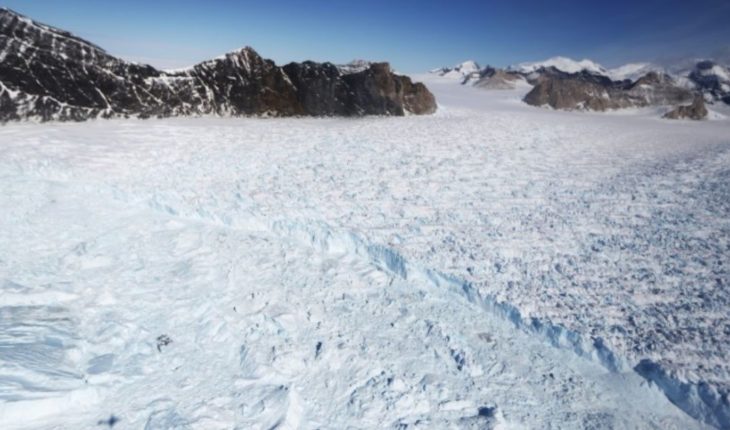Un aventurero estadounidense atravesó la Antártida de norte a sur a pie en solitario, convirtiéndose en la primera persona en realizar tal hazaña sin ningún tipo de asistencia.Colin O’Brady, de 33 años, tardó 54 días en recorrer mil 600 kilómetros mientras su posición, definida por un GPS, era indicada cada día en su sitio web colinobrady.com.O’Brady y el británico Army Captain Louis Rudd, de 49 años, salieron individualmente el 3 de noviembre del glaciar Union, en la Antártida, para ver quién lograba completar la hazaña de cruzar a pie solo y sin asistencia el continente helado.En 1996-97, un explorador noruego llamado Borge Ousland atravesó por primera vez la Antártida en soledad, pero recibió ayuda de terceros con cometas a lo largo de su travesía.
Day 54: FINISH LINE!!! I did it! The Impossible First ✅. 32 hours and 30 minutes after leaving my last camp early Christmas morning, I covered the remaining ~80 miles in one continuous “Antarctica Ultramarathon” push to the finish line. The wooden post in the background of this picture marks the edge of the Ross Ice Shelf, where Antarctica’s land mass ends and the sea ice begins. As I pulled my sled over this invisible line, I accomplished my goal: to become the first person in history to traverse the continent of Antarctica coast to coast solo, unsupported and unaided. While the last 32 hours were some of the most challenging hours of my life, they have quite honestly been some of the best moments I have ever experienced. I was locked in a deep flow state the entire time, equally focused on the end goal, while allowing my mind to recount the profound lessons of this journey. I’m delirious writing this as I haven’t slept yet. There is so much to process and integrate and there will be many more posts to acknowledge the incredible group of people who supported this project. But for now, I want to simply recognize my #1 who I, of course, called immediately upon finishing. I burst into tears making this call. I was never alone out there. @jennabesaw you walked every step with me and guided me with your courage and strength. WE DID IT!! We turned our dream into reality and proved that The Impossible First is indeed possible. “It always seems impossible until it’s done.” – Nelson Mandela. #TheImpossibleFirst #BePossible
Una publicación compartida por Colin O’Brady (@colinobrady) el 26 de Dic de 2018 a las 12:55 PST
O’Brady y Rudd, por su parte, utilizaron unos trineos llamados pulks que pesan unos 180 kilos.O’Brady llegó al polo sur el 12 de diciembre, el día 40 de su travesía.Este miércoles llegó a la meta, en el punto Ross Ice Shelf del Océano Pacífico, tras hacer un total de mil 482 kilómetros.Rudd le sigue a uno o dos días de distancia.O’Brady cubrió los últimos 125 kilómetros en 32 horas tras decidir, mientras se hacía el desayuno, hacer la última etapa de un tirón.”Mientras hervía agua para prepararme el desayuno, una pregunta aparentemente imposible surgió en mi mente”, escribió O’Brady en Instagram. “Me pregunté: ¿Sería posible hacer el camino que me queda hasta la meta de una tirada?”
“Para cuando me estaba atando las botas, el plan imposible se había convertido en un objetivo consolidado”, dijo. “Voy a hacer un esfuerzo y tratar de hacer los kilómetros que me faltan de un tirón”.The New York Times describió el esfuerzo de O’Brady como uno de los “hechos más notables de la historia polar”, a la altura de la “carrera por conquistar el Polo Sur” del noruego Roald Amundsen y el ingles Robert Falcon Scott en 1911.En 2016 un oficial del ejército inglés, el teniente coronel Henry Worsley, había intentado realizar la misma proeza, pero murió cuando buscaba terminar sin asistencia la travesía.
En esta nota:





